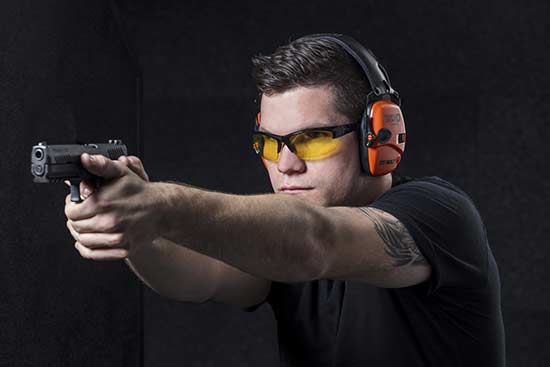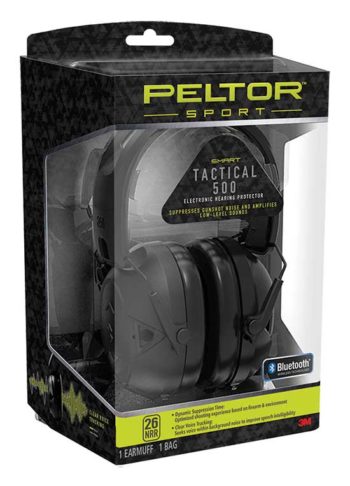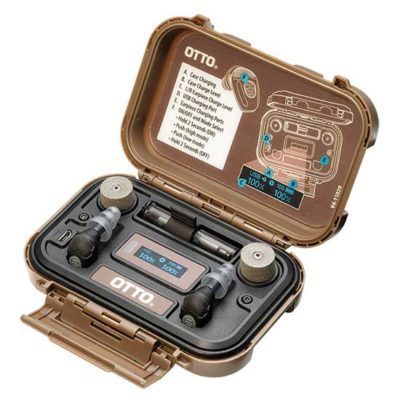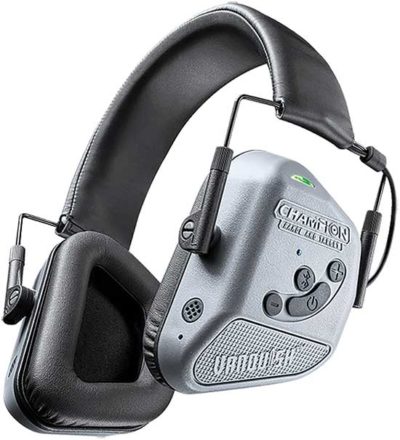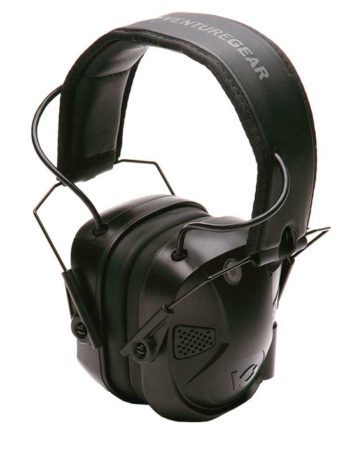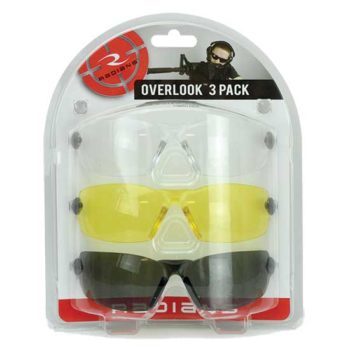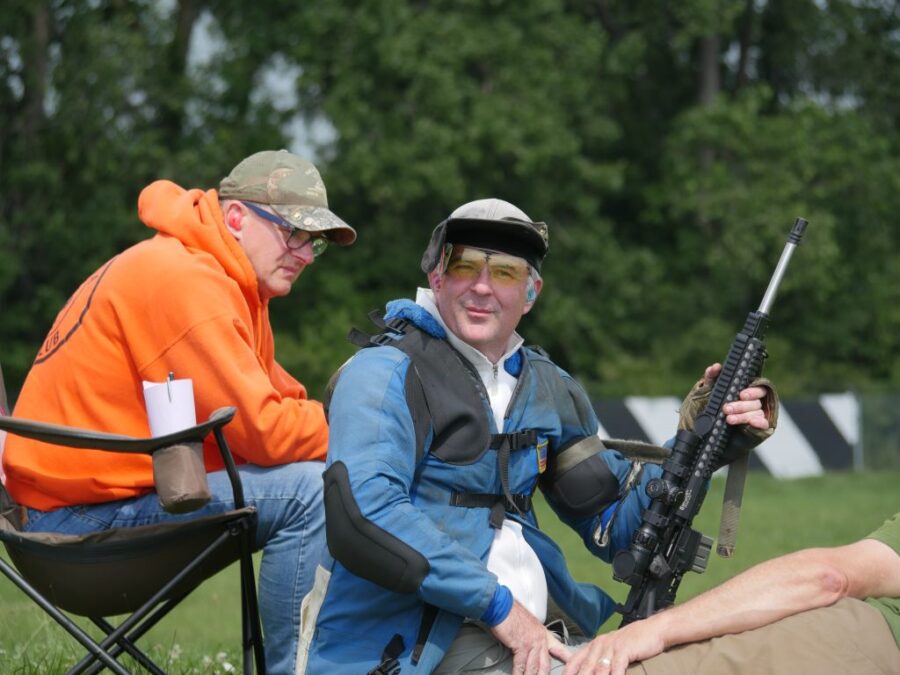Getting Your Safety Sales Strategy Right
In this age of hyper-compressed margins, one of the categories still capable of putting some money in the till is eye and ear protection — particularly if there’s a range component to your business.
For range operators, one of the better ways to increase sales in this category is to stop renting or letting guests use your equipment. Depending on your local market, this is a fairly easy change to make with eye protection, as the cost to customer is minimal.
Instead of renting for $0.50 to $1, sell them a pair of ANSI spec glasses for $2.49 to $5.99 they get to keep. You pay less than $1 for the glasses from many vendors; purchase in bulk without retail packaging and it can be considerably less.
Benefits are twofold: Guests get a germ-free experience with glasses that aren’t scratched, and employees can spend more time helping guests rather than cleaning glasses. Hygiene is coming more to the forefront. I know of more than one range with complaints (no lawsuits yet) where a customer caught pink eye and blamed the range.
Due to cost per unit, eliminating ear-protection rental represents a larger step. It can also have a larger payoff. Some guests will already have prescription glasses and won’t need protective eyewear, whereas everyone needs some sort of specific ear protection. Start by offering a low/mid/best option, always including earplugs. New shooters typically aren’t as startled by recoil as they are with the noise of a gun range, so earplugs and earmuffs are always recommended for the best experience.
Start With Premade Packages
As with most items selling at retail, it’s easier and more profitable to do so with premade packages. Start with a good low-end package: an inexpensive pair of muffs in the $10–$12 range, and include some foam plugs. A mid-tier example would be in the $15–$20 range, again including some foam plugs and muffs with NRR (Noise Reduction Rating) of at least 26. For the best option, high-quality muffs in the 29–33 NRR range with added foam plugs; this package would sell in the $20–$30 price point.
These packages offer a great opportunity to put your logo on the glasses and earmuffs included. Now, guests will have a souvenir of their visit to your range. With a logo, they’re great for product donations or to boost the perceived value of classes without costing much. For instance, a beginner class you would normally offer for $75 can easily become a $99 class by including the eye/ear protection. It represents a $24 increase in the ticket, costing you less than $12 — with add-on benefits of a higher perceived value and advertising your brand.
One range doing very well selling logo eye and ear protection is Eagle Gun Range, with locations in Lewisville and Farmers Branch, Texas. Owner David Prince and GM John Traupman shared with me it has been a very profitable strategy. They offer a package of Pyramex ANSI glasses and foam plugs for $5, and a Pyramex 26 NRR earmuff for $15. Both are adorned with the Eagle Gun Range logo. They’re marketed in-store on a foam display head on the counter. The counter also has a display of shooting glasses complete with a mirror, which helps sell glasses and muffs. Besides price point items, they also sell a lot of premium ear protection from Howard Leight (both passive and elec
Don’t Ruin The Experience
As range owners, we don’t often put much thought into the eye/ear protection rented out. However, consider the time, effort and astronomical investment you went through building the range to provide a great experience for guests. Now consider what we offer in eye/ear protection to our guests to have this experience. Do we rent scratched glasses? How about ruining the experience with earmuffs with dried out, hard-as-a-rock ear pads? Worse yet, have another guest’s sweat on them because an employee missed cleaning them during the rush?
If you step back and think about it from a long-term business strategy perspective, this would be insane.
I was as guilty as anyone when I owned my range, and I can remember giving the president of a major college a tour and handing him scratched glasses and dried out earmuffs. It’s like losing the Indianapolis 500 because of a 10-cent part on a $1,000,000 race car — don’t do it. The point here is even if you continue renting eye and ear protection, it’s worth keeping the gear in pristine condition.
Working With Manufacturers
Consider contacting manufacturers to take advantage of their range programs. Peltor’s program is typical: for every $1,500 of regular product purchased, you receive 10 pairs of glasses and 10 earmuffs for range or classroom use. Peltor also offers custom displays based on volume. Don’t be afraid to use these displays to showcase eye/ear protection in more than one area of the store.
Where and how you display eye/ear protection is important. Having the category near where the range check is will be key to sales. Best case, if you have an area where guests wait in line to check in to the range, form the line at the eye/ear protection display. (The layout at Ace Hardware is a great example of this — my local store seems to always get some money out of my pocket as I wait in line.)
No Range? No Problem
Without a range, a high-traffic area near training ammunition can be a prime location. Endcaps make great display areas for this category, as the product and packaging tends to be colorful and in many different sizes. Some manufacturers will have endcap displays available, others will offer two- or even three-sided displays. (Be sure to have a mirror near the displays.)
If you have a range, you have a huge advantage for product testing. Without going into a drawn-out scientific explanation, for about every 10 dB increase in noise the apparent loudness is doubled, so a 3 dB difference in sound rating on an earmuff is where guests will really notice the difference.
Just like clothing, if you can get someone to try on ear protection, the chances they will purchase on the spot goes up dramatically. Have them try a price-point model and a premium model, point out the comfort difference, as well as the sound deadening quality. Certain models like the Howard Leight L3 actually have technology to block 30 dB of sound and still allow the user to hear a loud command from the range safety officer (RSO). Unless your salesperson points this out, or the guest can test it on the range, it’s hard to convey on the package or a website.
Helpful Tips
Don’t forget to stock batteries for all the different models of electronic ear protection at great margins. “Beer in the ballpark” pricing rules should be applied for replacement batteries in time of need.
Electronic ear protection for students is one of the best ways to upsell premium electronics.
Mitchell Tyler co-owner of the two SafeSide Tactical ranges/stores in Virginia, has students wear electronic muffs during their smaller private classes. These classes run smoother and quicker since the students don’t have to stop shooting, remove the ear protection, listen and then wait for everyone to put the ear protection back on before shooting again.
Tyler shares the opinion of many: the lower price point electronic earmuffs, usually in the 20 NRR to 22 NRR range, may not be enough to comfortably shoot in an indoor range — especially a rifle bay. In these cases, doubling up with plugs and muffs is the way to go for guest comfort.
Another reason why it behooves the retailer to sell premium electronics is the dwell or attack time (the moment the muffs shut off for gun fire until the moment they turn sound back on) is longer than what a typical indoor range requires. This enables guests to be able to converse while others are shooting — which is the whole reason to offer electronics. Premium products will have a higher grade of electronic circuitry with much shorter time between shots and some offer technology designed to pick up voices better.
Idaho Falls-based Guns N Gear is another range doing well with electronic hearing protection. General Manager Michael Loy rents out Peltor TAC 300 electronic ear protection for $6 per time and does so around 100 times a week. As you would image, this has increased his sales of premium electronic muffs. During slow times they still sell three or so a week, during the busy season it jumps to 30 a week. No wonder he said, “Second to adding education and training, electronic hearing protection is best thing to happen to the range business in the last decade.”
Practice What You Teach
Are your RSOs and instructors using the premium eye and ear protection you sell? We all know how students look to instructors for advice on what to buy, so make it easy for them to say, “Use what I do.”
While on the subject of premium products, don’t forget about offering better grades of eye protection as well. According to Chris Leight, Howard Leight national sales manager, the number-one reason a customer should upgrade to better eye protection is fogging. If you spend any time in indoor ranges you know how hard it is to see the target, let alone shoot accurately with glasses that fog up. Offering guests choices with anti-fog coating is really doing them a favor and upping the chance they’ll enjoy the shooting sports.
Like sunglasses, many pairs of eye protection lenses are stepped on, scratched from being at bottom of a range bag or just plain lost — so multiple sales to the same guest throughout the year are quite common. Styles change and offer more chances at a sale. One of the newer items in eyewear is bifocal-style lenses. These come in powers from 1.0X all the way to 3.0X. Just like with ear protection, having a mirror in this area is important.
A closing tip from Chris Leight: Use baby wipes to clean ear protection pads to avoid drying out the rubber.

